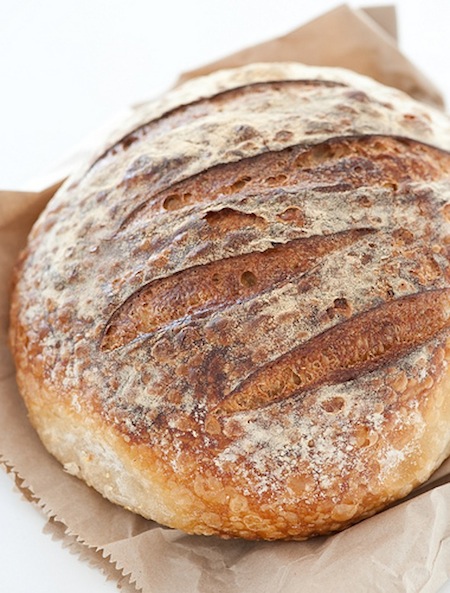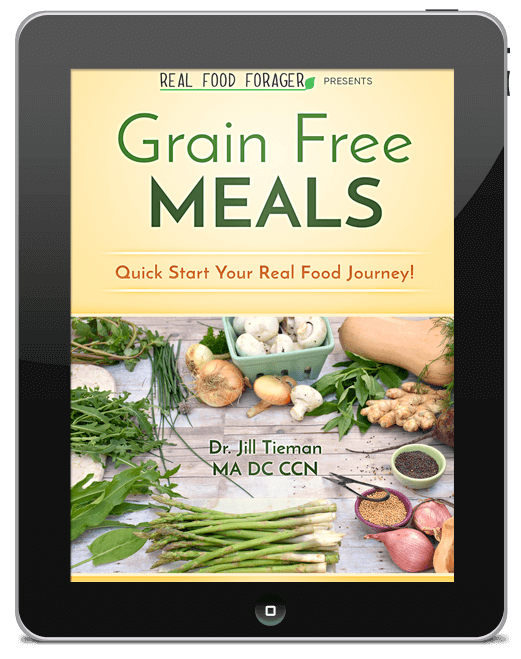
I’ll never forget the first time I ate sourdough bread in, of all places, San Francisco. Whenever you eat bread, you should make it sourdough.
Love Affair with Sourdough Bread
My dear friend Sue and I were college grads on a cross country adventure. We found ourselves across the bay, in Sausalito, enjoying the shops and streets filled with people on a brilliant summer day.
Strolling along, we passed a bakery emanating the siren smells of fresh baked bread. It beckoned us in.
We purchased a huge loaf of the famous San Francisco sourdough.
Once started, we couldn’t stop eating that amazing bread – had to cancel dinner plans as we were stuffed with sourdough! Since then, it’s been an unrequited love affair (because I’m mainly grain-free) between sourdough and I.
Originating in Ancient Egypt around 1500 BC, sourdough was probably the first form of leavening available. Sourdough remained the usual form of leavening into the European Middle Ages. Later on it was replaced by barm from the beer brewing process, and then purpose-cultured yeast.
Sourdough Leavening is a Traditional Preparation of Grains
Bread made from 100 percent rye flour, which is very popular in the northern half of Europe, is usually leavened with sourdough. We actually know that the people in the isolated Lötschental Valley in Switzerland, who were studied by Dr. Price, made huge loaves of sourdough rye that went through a two week fermentation process.
Fermentation Removes Phytates and Enzyme Inhibitors
Sourdough is a dough containing a Lactobacillus culture, usually in symbiotic combination with yeasts. However, the lactobacillus is much greater in proportion to the yeast.
In comparison with yeast-based breads, sourdough produces a distinctively tangy or sour taste, mainly because of the lactic acid produced by the lactobacilli.
This tangy taste makes sourdough oh so good!
Sourdough Ancestral Pre-Ferment
The actual medium, known as starter or levain, is in essence an ancestral form of pre-ferment. It is not uncommon for a baker’s starter dough to have years of history, from many hundreds of previous generations.
Folks used to always save some starter and share it with friends and family.
Sourdough was the main bread made in Northern California during the California Gold Rush. The bread was so common that sourdough became a general nickname for the gold prospectors.
Sourdough fermentation was carried into Alaska and the western Canadian territories during the Klondike Gold Rush. Conventional leavening such as yeast and baking soda were not reliable in the conditions faced by the prospectors.
Miners and other settlers carried a pouch of starter either around their neck or on a belt in order to protect the cultures from freezing.
5 Benefits to Sourdough Bread Preparation
1- Increases Beneficial Lactic Acid
The longer rise time needed for sourdough increases the lactic acid and creates an ideal pH for the enzyme phytase. This enzyme breaks down phytates (read more about the dangers of phytic acid here) more effectively than in yeast breads.
Sourdough rye has the least amount of phytates (somehow the Swiss culture mentioned above must have known this) making it a healthier bread.
2- Aids in Predigestion of Starches
The bacteria and yeast in the sourdough culture work to predigest the starches in the grains, thus making it more easily digestible to the consumer.
This is beneficial, especially to people who eat a lot of bread products.
3- Sourdough Aids in Breakdown of Gluten
Here again, the longer soaking and rising times in the preparation of sourdough breaks the protein gluten into amino acids, making it more digestible.
This is helpful for bread eaters, but people who have to be gluten and/or grain free would not be able to eat sourdough bread.
4- Acts as a Preservative
The acetic acid which is produced along with lactic acid, helps preserve the bread by inhibiting the growth of mold.
5- Better Blood Glucose Regulation
There has been some research suggesting that sourdough bread – white bread – showed positive physiological responses. The subjects’ blood glucose levels were lower after eating sourdough white bread compared to whole wheat, whole wheat with barley and plain white bread.
Interestingly, the subjects tested after eating whole wheat bread fared the worse – with spiking blood glucose levels.
Additionally, the researchers found that the positive response lasted through the next meal and for several hours after that. They concluded that what you have for breakfast will influence how the body responds to the next meal.
This is all well and good, but the most pressing reason to eat sourdough bread is the TASTE! That tangy, slightly sour taste is awesome!
If you eat grains, make sourdough your primary source of grains. And don’t be fooled by most of the packaged breads that claim to be sourdough. Most of them do not use authentic sourdough starter.
You will be able to taste the difference when it is authentic. For this reason, you may want to make your own, unless you know a bakery that is clearly using authentic sourdough starters!
You may also be interested in:
Get the Most Current Information about the Microbiome
Are you as fascinated by the microbiome as I am? Are you hoping for a cure through this new research explosion?
Learn how to make bone broth and soups full of collagen and gelatin in my ebook Beyond Broth – on sale today!
Check out my newest ebook, Heal Your Microbiome Optimize Your Health – on sale today!
Like this article? Get many more and tons of information and instructions on using grain free flours in my fantastic kindle books. You don’t need a kindle to read them, as Amazon offers a FREE reader for all devices, on the sales page for each book.
These recipes are suitable for Paleo, SCD, GAPS and all grain free eaters.

Don't Miss These:
Original article and pictures take realfoodforager.com site
Комментариев нет:
Отправить комментарий